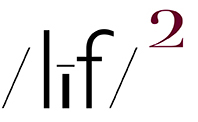(embiggenable) • iPhone
ON A RECENT ENTRY, # 5532 / Here we go again, A COMMENT WAS LEFT by Markus Spring...
"Hmm, AI in image processing doesn't really attract me..."
Markus went on to explain why AI image processing does not attract him. ASIDE my rsponse to Markus is in no way to be considered as a rejoinder / contrarian response cuz it is not.END OF ASIDE.
Since my dawn of picture making time, I have avoided any thing that might be considered as an "automatic", aka: not controlled by me, function or accoutrement. As an example, from day one, I always used a handheld light meter, normally with a spot metering attachment. None of that who-knows-what-it's-doing in-camera metering for me.
When I adopted digital picture making, I continued to be a control freak ... RAW format only (none of those crappy JPEGS for me). As I worked my way up the ever-improving sensor capability's ladder, I worked my ass off processing my image files to obtained my desired result. Not because I wanted to but cuz, given the shifting state of the art, I had to.
So, my embrace of Ai-based picture making-together with an, at first, skeptical embrace of JPEG image files-could be considered by some who know my history as a rather strange development (might be a pun there).
But here's the thing. I have come full-circle to a point of same-as-it-ever-was, picture making wise. To wit, back in the analogue days,you chose your poison (color film / paper), made an exposure, took the result into the darkroom and made a print, using the very limited range of control available to do so, and lived with the result. Which is not to write that the result could not be a very nice color print cuz, most often it was.
Compare that to my current picture making M.O. I have picked my poison (an iPhone), make an exposure (Ai hard at work), open the jpeg in my "darkroom", make a few minor adjustments (work-arounds, side-steps, "tricks", flat out ignoring some conventional processing wisdom), make a print and live with the result. Which is not to write that the result could not be a very nice color print cuz the result is always> remarkably close, if not not perfectly matched, to my desired result.
And, have no doubt about it. My desired result, print wise, conforms to a very high standard. Back in the analogue days, my C prints were very often perceived to be dye transfer prints-in large part due the fact I printed with condenser-head enlargers, not diffusion-head enlargers.
My digital era prints are produced to mimic the best qualities of analogue era C prints. Soft detailed highlights and deep but detailed shadows with smooth tonal transitions and "clean" natural color. Prints are sharp but not state-of-the-art (so called) eye-bleeding sharp. In short, a pleasing / easy to look at picture.
CAVEAT All of the above written, it should be understood that, while it might seem that I just breeze my way through some quick and easy picture making steps, especially at the prcessing stage, that is simply not the case. I bring 30 years of Photoshop image processing skills and experience to every image file I process.
There is no question that the iPhone Ai gets me remarkedly close to where I want to be (90% of the time), it still requires a significant amount of applied skill and knowledge, Photoshop image file processing wise, to achieve my desired end result. To be sure, it is not rocket science level wise but most certainly it is not click the button / move the slider wise simple.END OF CAVEAT
